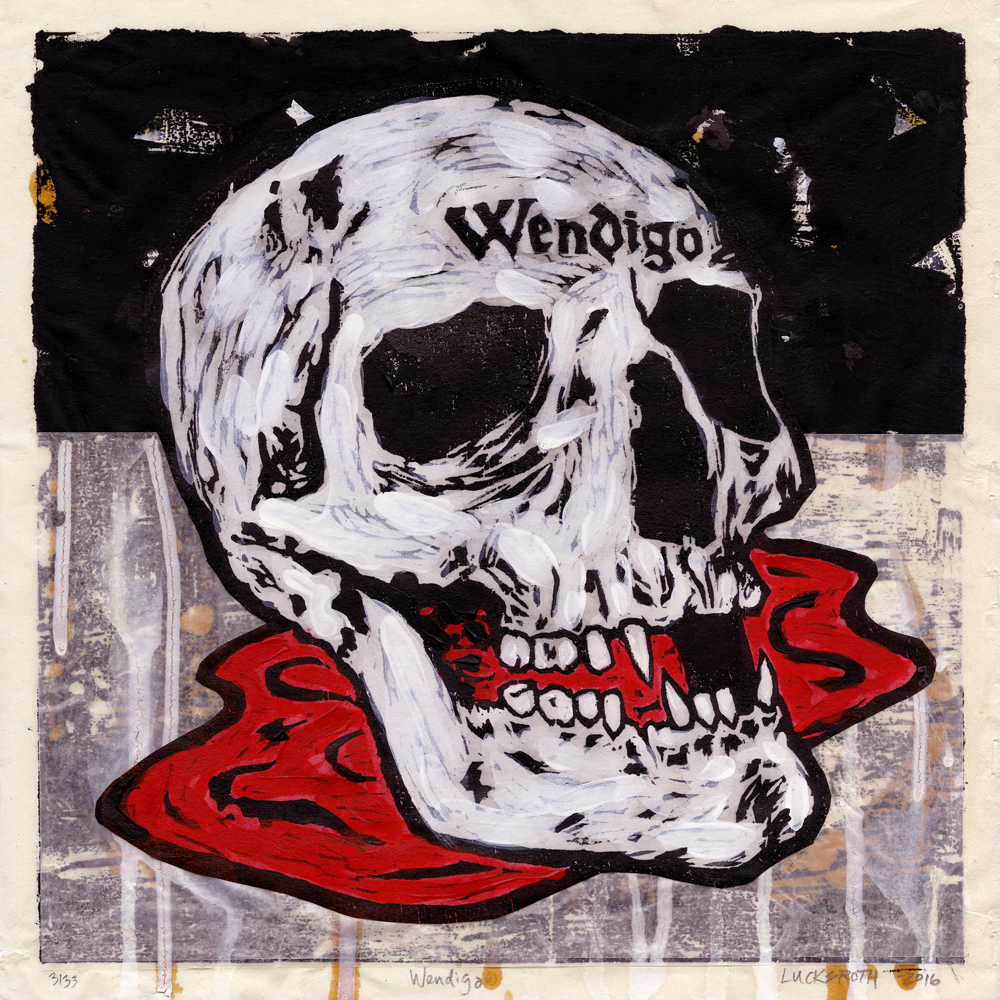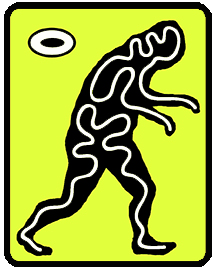
< < BACK TO GALLERY
GREG LUCKEROTH
Wendigo
Woodblock print, acrylic, collage
12'' x 12''
2016
The Wendigo (or Windigo) is a half-beast, half-human creature that fervently craves and consumes human flesh. Descriptions of Wendigos vary, but they are commonly described as resembling humans with emaciated and bony bodies, sallow grey skin, and smelling like death and decay. They are sometimes described as being covered in dark, matted hair, having sunken and glowing eyes, lips that have been chewed away, and having enlarged wolf-like teeth.
Wendigos are believed to be humans that have transformed into beasts as a result of cannibalizing other human beings. In the cold northern woods, people suffering from famine have found it necessary to resort to cannibalism in order to survive. It is believed that after resorting to cannibalism a person is driven by an insatiable hunger for human flesh. It is the ravenous spirit that causes their body to distort and alter into a beast.
Sightings of Wendigos date back to the 17th century and are commonly reported in Canada, the Great Lakes region, and the East coast. Associated with the Algonquin Native Americans, the Wendigo is especially well-documented in Algonquin lore. Where the truth ends and myth begins is hard to discern. As recently as 1907, Jack Fiddler, an Oji-Cree chief, was convicted of murder for euthanizing people suffering from wendigo psychosis. Although sightings of Wendigos have become rare in recent years, this may simply be a result of cases of cannibalism being just as infrequent.

